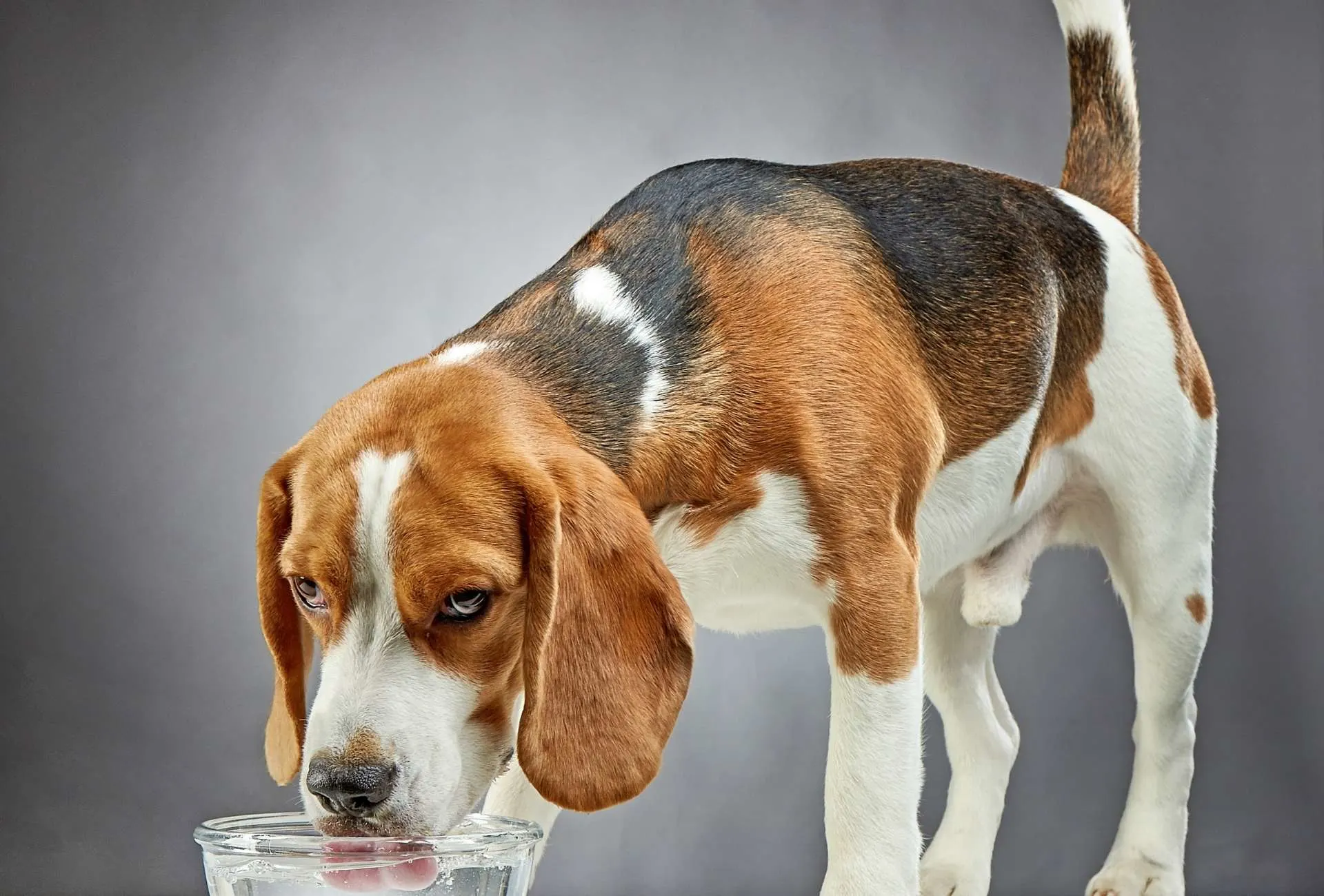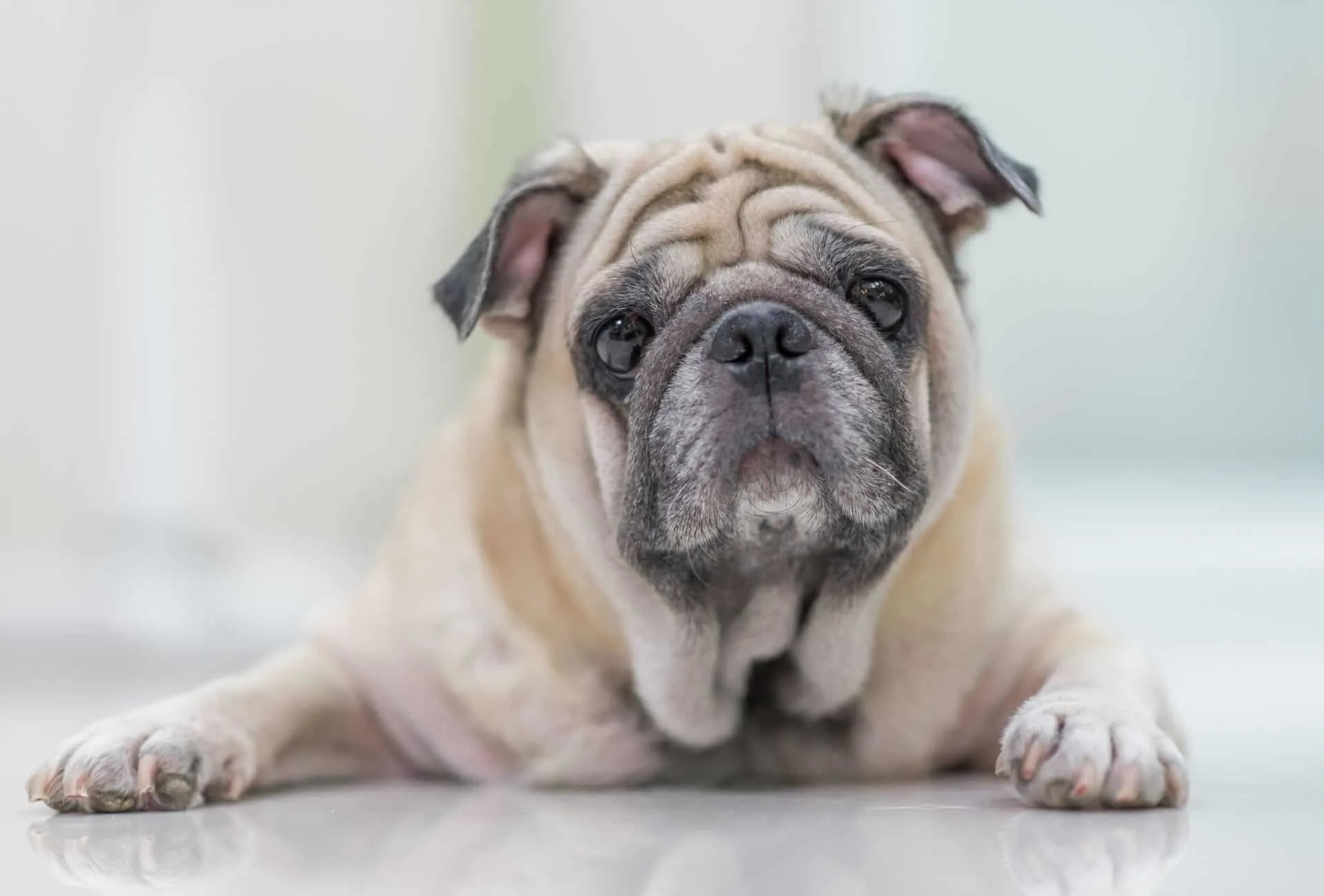As dogs approach the end of their life, their behavior and demeanor might change.
One of these changes can include seeking out the water bowl more often.
The reasons for increased thirst are plentiful and range from milder medical issues to serious underlying conditions.
It’s advised not to interpret standalone symptoms when it comes to recovery chances or for diagnosing medical issues in the first place.
Keep in mind that drinking lots of water is neither a sure sign that your dog is about to die nor does it mean your dog is necessarily healthy.
It really depends on the circumstances, pre-existing conditions, and health status.
Excessive thirst paired with other symptoms can narrow down the issues your dog is experiencing.
That’s why it’s important to note any changes in your dog and share sudden or noticeable changes with your vet.

Did you know?
Many dying dogs actually refuse water completely as their body begins to shut down.
This is similar to humans in hospices when their bodily functions start to decrease bit by bit.
Your dog might go the other route and start hanging around the water bowl a lot.
Do Dogs Drink a Lot of Water Before They Die?
Dogs can drink properly up until passing but increased or decreased thirst is possible and may indicate underlying medical issues. Not all dogs drink a lot of water before they die, thus it’s not recommended to rely solely on water intake to evaluate a dog’s health status.
Drinking a lot of water can be a sign of a dog dying, especially if that dog is sick or old and suffers from an underlying medical issue that increases thirst or causes disorientation.
However, not all dogs drink a lot of water before they die.
Water consumption is not a sure way of deciding whether your dog is deteriorating or perhaps improving.
Excessive drinking is just a symptom.
In fact, other behaviors before death might be more prominent.
If your dog is seeking out the water bowl more often, you should only suspect they might be in the process of dying after your vet has determined that to be true.
In that case, quality of life usually wasn’t up to par in the time leading up to this point.

You’ll probably find your dog in one of four scenarios.
- Your dying dog drinks more due to diarrhea, vomiting, meds, infections, or other secondary conditions.
- Your sick dog has been suffering from a condition that increases thirst.
- Your sick dog is seemingly getting better.
- Your dog suffers from some milder conditions.
1. Dying Dog Drinks More Water: Side Effects
Dogs can drink a lot of water before they die if that’s part of the side effects they’re experiencing due to the treatment of an underlying issue.
In this case, the underlying issue might not cause the increased thirst but the side effects of its treatment may do so.
For example, if your dog is on medication one of the side effects may include increased thirst.
Here are a couple of reasons why you might think your dog’s drinking indicates their end of life:
- Medication
- Radiation therapy
- Diarrhea
- Vomiting
- Fever
- Infection
None of these reasons mean that your dog is actually in the process of dying, and it doesn’t mean that treatment is necessarily working either.
In any case, it’s essential to consult your vet.
Doesn’t matter if you think your pet is getting better, getting worse, experiencing side effects, or if you suspect another medical issue.
Your veterinarian should be able to pin down the issue and connect the symptoms.
2. Sick Dog Drinks More Water: Pre-Existing Condition
If your dog has been sick for a while and suffers from a medical condition that increases thirst, it’s possible that this behavior continues right up until their passing.
These pre-existing conditions may include:
- Kidney disease
- Liver disease
- Cancer
- Hyperthyroidism
- Diabetes
- Parasites
- Hypercalcemia
- Heatstroke or hyperthermia
In this case, it’s possible you’ll notice behaviors that may or may not be connected to these issues.
Whatever condition your furry friend is suffering from, your veterinarian should either be able to help with treating these conditions or discuss other options for serious cases.
Don’t just rely on the symptom fitting or not fitting to your dog’s condition. Always consult your vet if in doubt.
If your dog is suffering or drastically changes their behavior, immediate veterinary care might be necessary.
Dogs with bloat can actually drink excessively, for example. It’s always best to monitor a sick pet.
3. Sick Dog Drinking Water Is Getting Better
It may be possible that your sick dog is drinking more water to get well again and regain strength but if your dog is suffering from a serious disease, it’s best to temper your expectations.
Crucial details such as behavioral or physical changes need to be shared with your vet.
Of course, it’s always worth a shot to see what can be done together with your vet if your dog seems to be improving.
However, vets usually only resort to using the word “dying” in any capacity if they’re confident in their diagnosis.
That means that a complete turnaround is not certain.
Sometimes, dogs just act instinctively and may seek out their water bowl due to disorientation or in a quest to replenish again, despite other vital body functions shutting down.
The chances of your dog improving depend on the condition and your vet should be able to inform you.
4. Your Dog Is Not Really Dying
If a healthy dog has increased thirst, it’s most likely due to an environmental change or a medical issue.
Healthy dogs may drink more if they’re stressed for a variety of reasons.
Important to note: Even sick dogs can suffer from temporarily increased thirst.
That’s why it’s crucial to consult your vet even if you think it might be due to an underlying issue. Your dog may just experience temporary issues that may need veterinary attention.
Milder conditions for increased thirst include the following:
- Stress (moving, loss of family member, new puppy in household)
- Exercise
- Hot weather
- Dietary change
However, in this case, you probably wouldn’t be checking out if increased thirst is a sign of whether your dog is dying.
I get it though, sometimes we dog owners are just overly cautious.
If you suspect that the increased thirst may be related to any medical issues whatsoever – be it mild or severe – consult your vet.
Think about the circumstances and health status of your dog.
Are they suffering from any medical issues? Are they of old age? Could they experience an acute medical emergency? Has anything in your household changed lately?
All these questions will help you determine if your dog is actually drinking more water because they’re in the process of dying.
Will a Dying Dog Drink Water?
Whether a dying dog will drink water depends on their condition and the stage they’re at. Some dogs may have increased thirst whereas others refuse to drink water.
But as mentioned above, drinking or refusing to drink are only symptoms and can have plenty of reasons.
Rule out that your dog is suffering from the lack of water and consult your vet if you suspect that your dog’s condition is deteriorating or improving.
If your dog refuses to drink water and his quality of life has been determined by your vet to be extremely low, drinking may not be the primary concern.
However, drinking excessive amounts at once may worsen the condition, especially if your sick dog is in distress.
How Long Can a Dying Dog Go Without Water
Dogs can generally go 2-3 days without water, but dehydration symptoms might surface after 24 hours. A dying dog may not be able to survive a full day without water.
Sick dogs are not able to deal with a lack of water or food as well as a healthy dog can.
It’s not always just because of the lack of water itself though.
Instead, the body is shutting down and your dog may appear weaker overall.
In that case, the refusal to drink won’t cause death but impending death causes your dog to avoid drinking.
Every individual is different though.
If you suspect that anything at all can be done for your pet, consult your vet.
Conditions that can be treated need to be checked out by a vet immediately.
Only after your vet has determined quality of life to be extremely low with no treatment plan it’s time to discuss options such as euthanasia.
Euthanasia is not painful if done properly and may be the best solution if your pet is seriously suffering.
Talk to your veterinarian about possible options and view the drinking just as what it is – one of many symptoms.
Disclaimer: This blog post does not substitute veterinary attention and does not intend to do so. I am not a veterinarian or pet nutritionist. If your dog shows any sign of illness, call your vet.